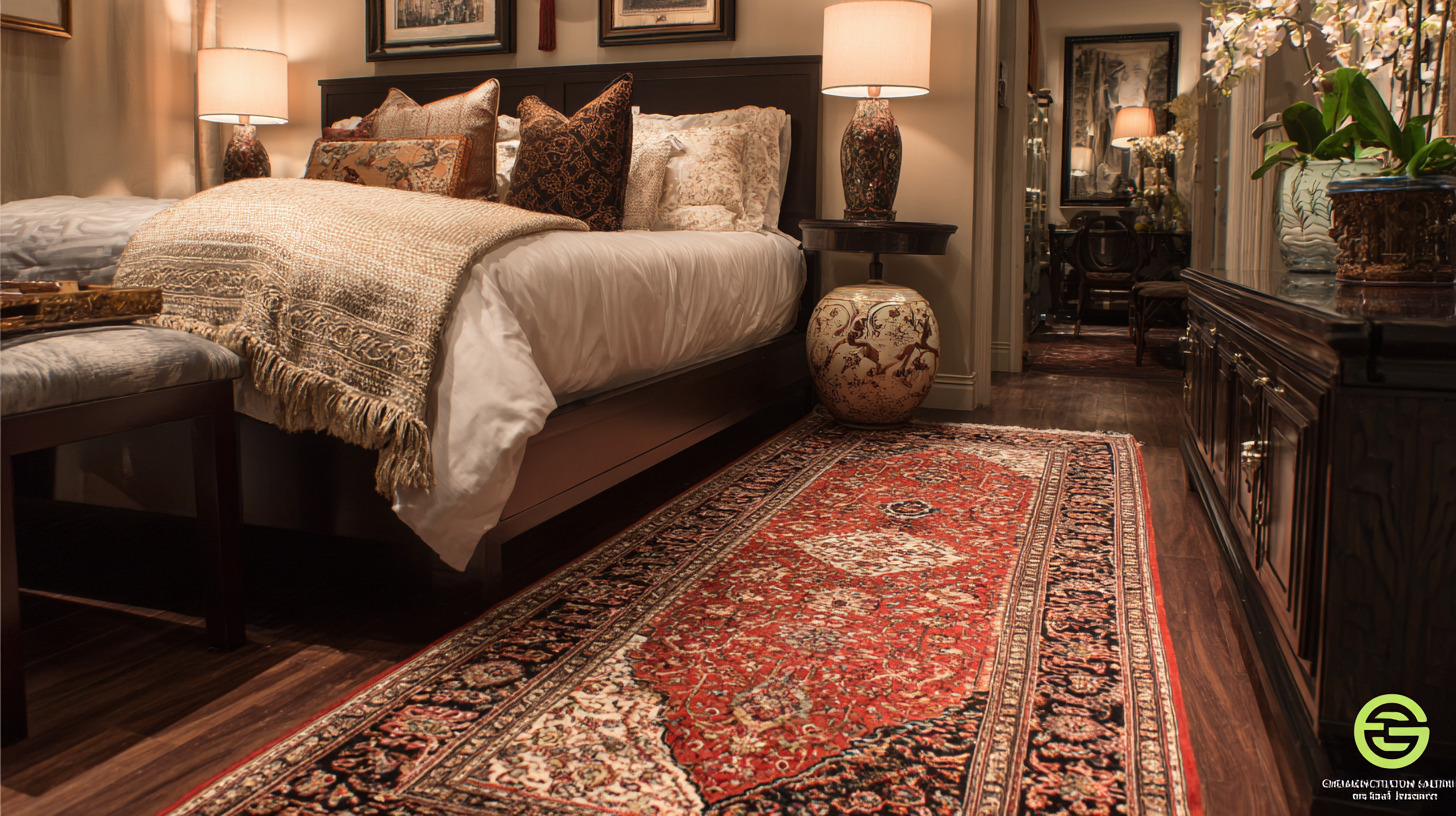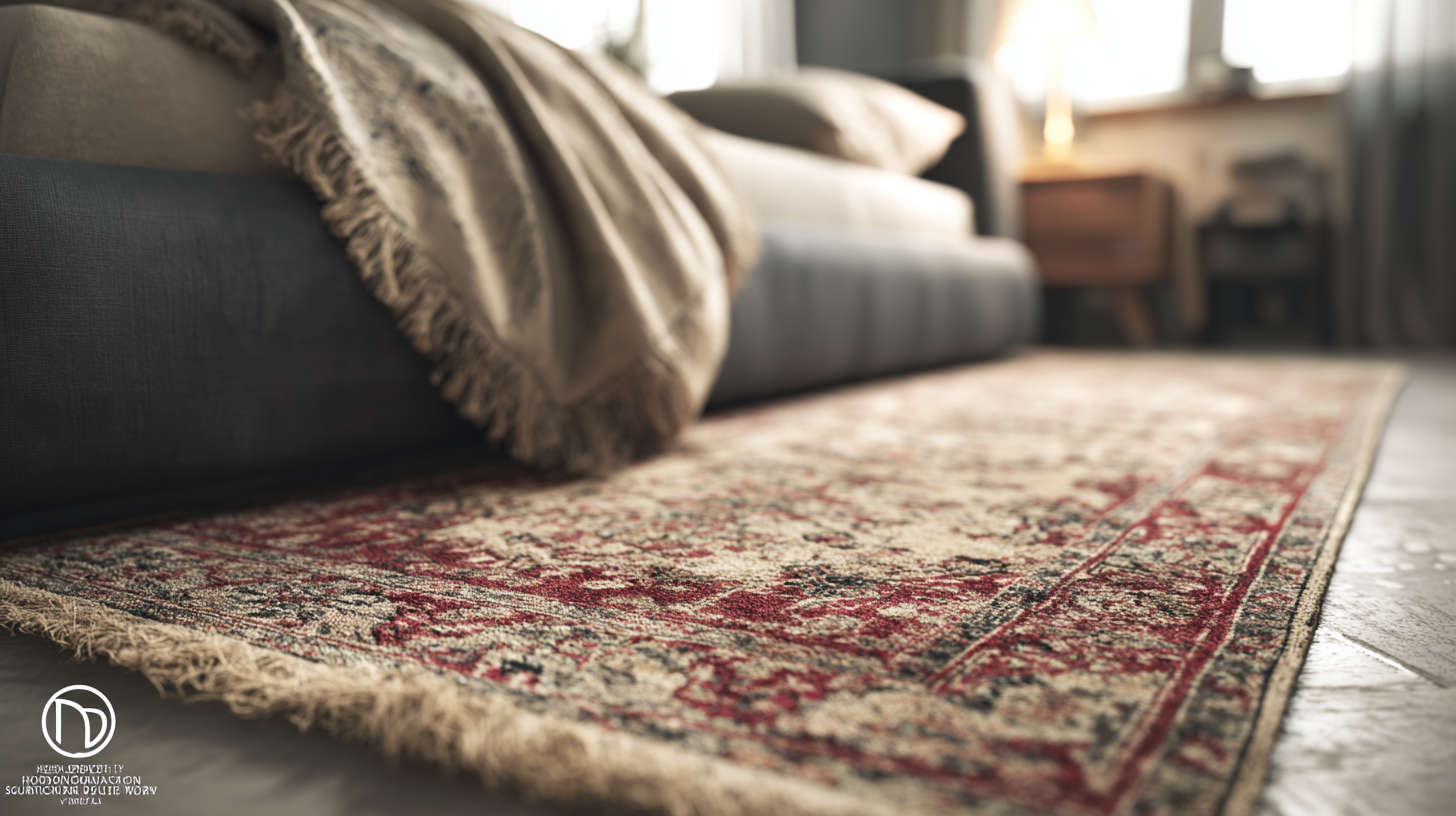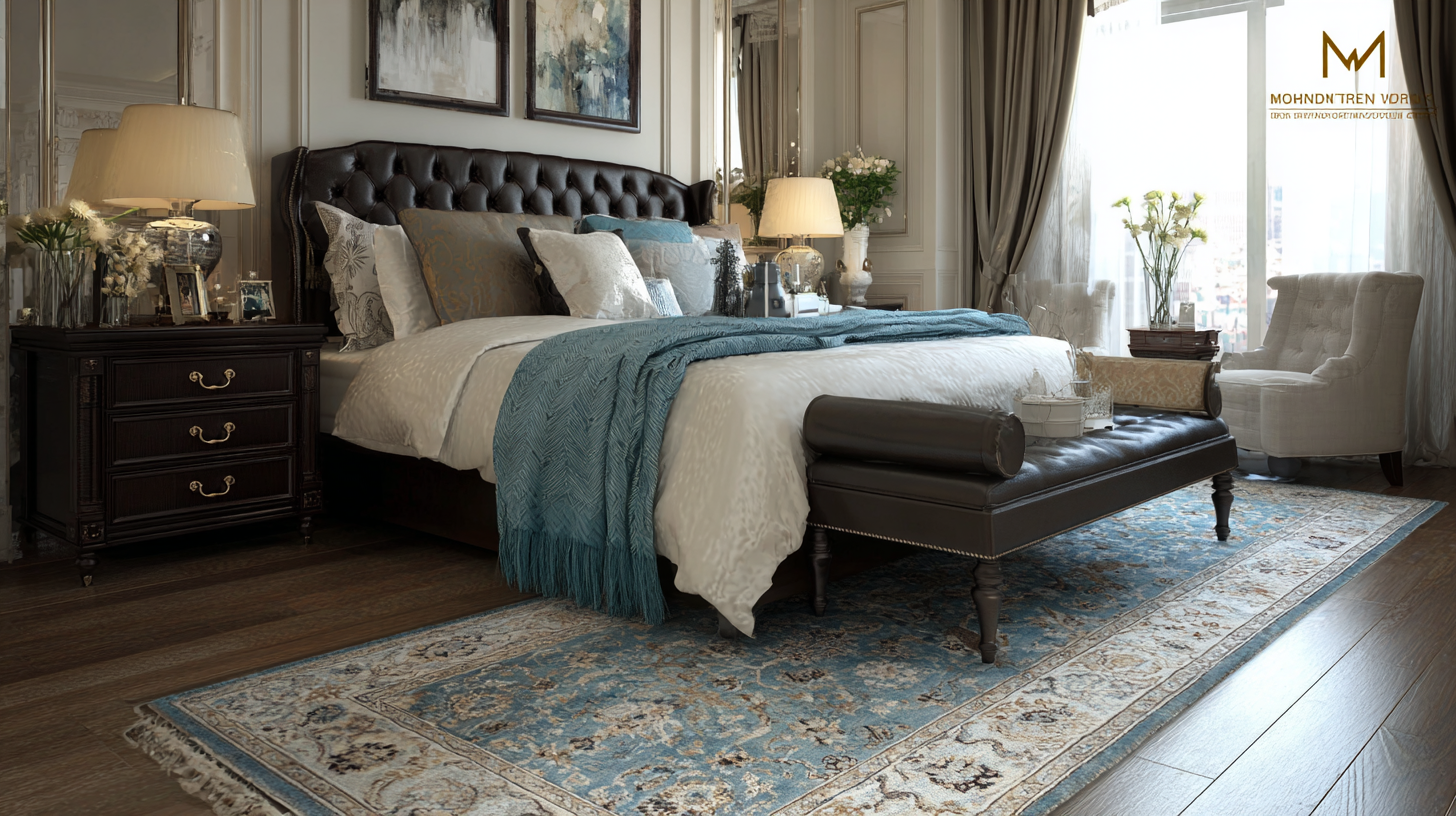
-
Home
-
About Us
-
Products
-
News
-
Blog
-
Contact Us
Leave Your Message

In today's global market, mastering the intricacies of import and export certifications is essential for anyone looking to excel in the realm of interior décor, particularly when it comes to designing the perfect ambiance with Bedroom Runner Rugs. These stylish and practical rugs not only enhance the aesthetic appeal of a bedroom but also bring warmth and comfort to personal spaces. As consumers increasingly demand high-quality products, understanding the certifications that ensure the quality and safety of these rugs becomes paramount. This comprehensive tutorial will guide you through the necessary steps to navigate the certification process effectively, ensuring that your Bedroom Runner Rugs meet both international standards and consumer preferences. Join us as we delve into the world of "中国智造,全球热销,品质保证" (China's intelligent manufacturing, globally popular, quality assurance) to help you make informed choices for your home décor needs.

When it comes to importing and exporting bedroom runner rugs, understanding the necessary certifications is crucial for both businesses and consumers. Import and export certifications ensure that the products meet safety and quality standards set by various regulatory bodies. These certifications help safeguard against subpar materials and will ensure that the rugs are free from harmful substances. For retailers, being able to provide documentation proves that their products have been vetted and conform to international guidelines, thus fostering trust with consumers.
In addition to safety certifications, businesses must also navigate trade agreements and tariffs that can impact the cost and logistics of getting these beautiful rugs to market. Knowledge of various import/export regulations, such as those outlined by the Customs and Border Protection (CBP) in the U.S., can provide critical advantages in the supply chain. This can lead to smoother transactions and reduced delays at ports, ultimately improving customer satisfaction. By mastering these certifications, businesses can ensure that their bedroom runner rugs not only appeal to aesthetics but also meet the required legal and safety standards, enhancing their reputation in the marketplace.
The global carpets and rugs market is on the rise, demonstrating significant potential for growth, with a valuation of USD 58.93 billion in 2024 and projections soaring to USD 133.94 billion by 2032. This booming market emphasizes the importance of quality certifications, which serve as a hallmark of excellence in rug manufacturing. Quality certifications not only enhance consumer trust but also promote sustainability through adherence to environmental standards. For manufacturers, these certifications can lead to improved market competitiveness, as consumers increasingly prioritize products that align with eco-friendly practices.

In the context of modern manufacturing, certifications like those for recycled materials play a pivotal role. For instance, the introduction of innovative materials such as recycled PET in tufted carpets reflects a broader commitment to sustainability and a circular economy. This shift not only caters to consumer preferences for sustainable products but also meets the industry's rigorous demands for eco-conscious practices. As awareness of environmental impacts grows, businesses that invest in quality certifications and sustainable materials are poised to lead in this expanding market, capitalizing on both consumer demand and regulatory requirements.
When it comes to choosing the perfect bedroom runner rugs, certifications play a crucial role in ensuring their quality and durability. Various certifications not only serve as a mark of trust but also indicate that the rugs meet specific industry standards. For instance, rugs that carry the GoodWeave certification guarantee that they are made without child labor and adhere to ethical manufacturing practices. This commitment to ethical production often translates to higher quality materials and craftsmanship, which enhances the rug's longevity.
Another essential certification to consider is the Carpet and Rug Institute (CRI) Green Label Plus certification, which ensures that the rugs have low volatile organic compound (VOC) emissions. This is particularly important for indoor environments, as it contributes to better air quality in your bedroom. Rugs that are certified by CRI are more than just aesthetically pleasing; they offer peace of mind knowing that they are both durable and safe for your home. By understanding these certifications, consumers can make informed choices that lead to more sustainable and durable bedroom decor options.
| Certification | Description | Importance | Validity Duration | Cost Estimate |
|---|---|---|---|---|
| OEKO-TEX® Standard 100 | Ensures textiles are free from harmful substances. | Enhances consumer trust and safety. | 1 year | $1,500 - $3,000 |
| Global Organic Textile Standard (GOTS) | Certification for organic fibers and sustainable processes. | Supports sustainable production practices. | 1-3 years | $2,000 - $5,000 |
| ISO 9001 | Quality management system certification. | Ensures consistent product quality. | 3 years | $3,000 - $7,000 |
| RugMark/GoodWeave | Ensures rugs are made without child labor. | Promotes ethical production. | 1 year | $1,000 - $2,500 |
| CR Registration | Compliance certification for regulatory standards. | Ensures legal compliance and safety. | Varies by product | $500 - $1,500 |
Sustainable practices are becoming increasingly essential in the rug industry, particularly in the certification processes for bedroom runner rugs. According to the 2022 Global Sustainability Report, 74% of consumers believe that brands should be environmentally responsible. This sentiment is driving manufacturers to adopt eco-friendly materials and practices that not only minimize environmental impact but also enhance product credibility.
Certification bodies are now placing a strong emphasis on sustainability. For instance, the GoodWeave certification ensures that rugs are produced without child labor and under fair working conditions, while also promoting environmentally responsible practices. Reports indicate that rugs made with 100% natural fibers and dyes can reduce the carbon footprint by up to 50% compared to conventional production methods. Furthermore, sustainable practices often translate into higher quality products, as natural materials tend to be more durable and better for indoor air quality.
As the demand for ethically produced rugs grows, more companies are incorporating transparency into their supply chains. The Sustainable Furnishings Council notes that 60% of consumers are willing to pay a premium for sustainably sourced products. This evolution in consumer preferences means that rug certifications must not only focus on fair labor practices but also on sustainable manufacturing processes, ensuring a positive impact both on people's lives and the planet.
When it comes to purchasing the best bedroom runner rugs, understanding the certification process is crucial for both consumers and manufacturers. The U.S. floor covering market, valued at approximately $25 billion in 2022, emphasizes the importance of certified products as consumers are increasingly aware of quality and sustainability standards. Certifications such as the Global Organic Textile Standard (GOTS) and the Standard 100 by OEKO-TEX are essential benchmarks that assure buyers of product safety and eco-friendliness. These certifications not only enhance product credibility but also significantly influence purchasing decisions; reports indicate that consumers are willing to pay up to 30% more for certified products.

For manufacturers, mastering the import and export certification process is a vital step in ensuring market access and compliance with international standards. The complexity of certification can vary based on the region and the specific regulations that apply to textile products. As highlighted in the Market Research Future report, the home textiles segment is projected to grow by 4% annually, underscoring the necessity for manufacturers to stay informed about evolving certification requirements. By navigating this process effectively, manufacturers can enhance their product offerings and tap into the growing market of discerning consumers who prioritize sustainability and quality in their purchases.